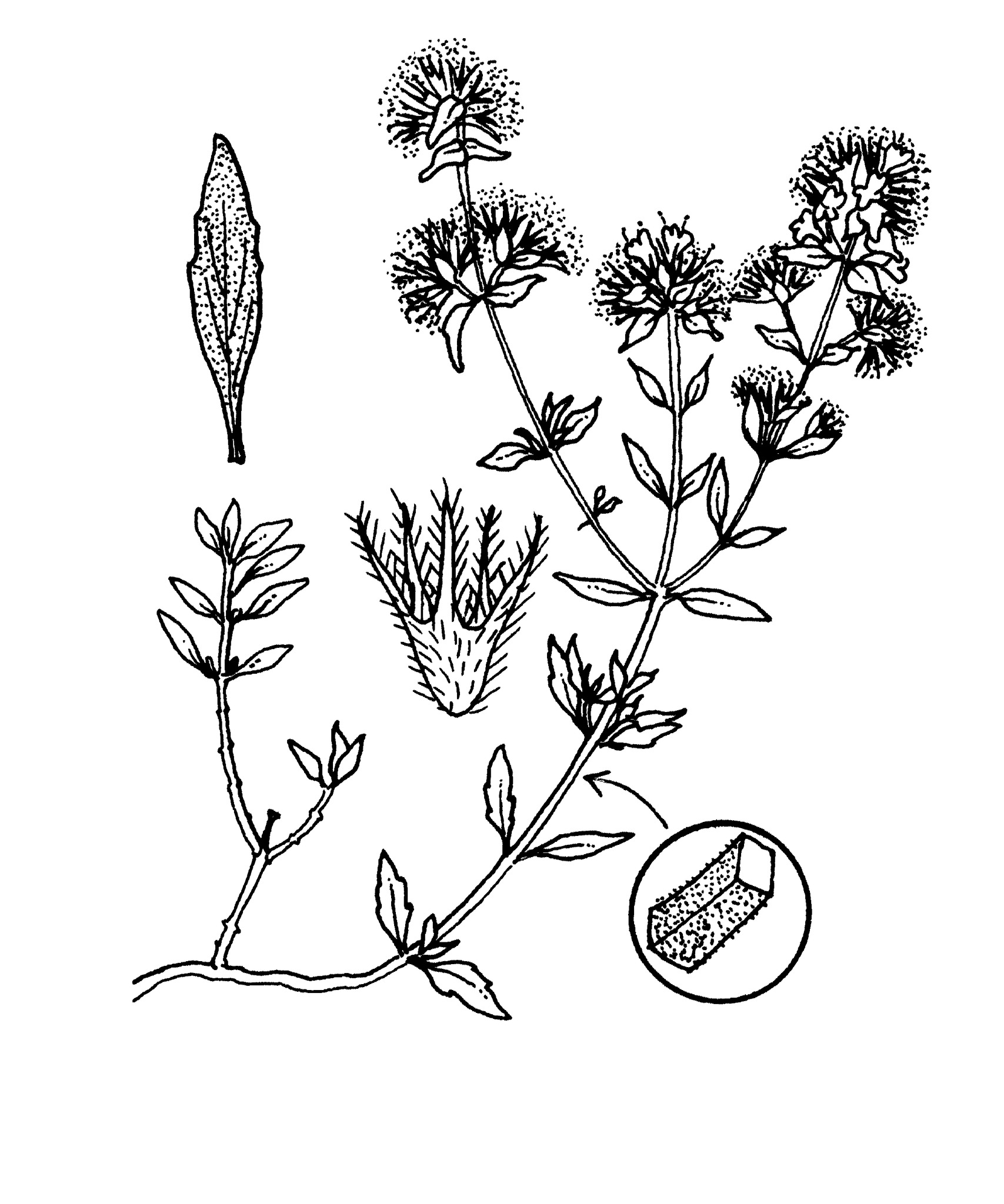
Erect or ascending small shrub to about 30 cm tall, not rooting at the nodes. Stems 4-angled, covered on all 4 surfaces with small hairs. Internodes much longer than the leaves. Axillary buds develop to form tufts of leaves in the axils. Leaves to 15 mm long, narrowly ovate, elliptic or rhombic and narrowed to a conspicuous petiole, not ciliate, covered with tiny hairs which make young leaves, and sometimes mature leaves silvery. Leaf margin irregular due to the presence of occasional small teeth. Flowers in small heads or interrupted 'spikes'. Bracts either similar to the leaves or wider, ovate, only shortly stalked, paler and with densely ciliate margins. Calyx 2-lipped, lower lip divided to the base into narrow ciliate (1.5 mm) teeth. Upper lip divided at about two-thirds into 3 narrowly triangular ciliate teeth about 7 times as long as wide. The effect is of 5 equal feathery teeth. Corolla small, not protruding beyond the calyx teeth, white, upper lip notched, lower lip of 3 equal lobes.
Spain
Erect habit, crenate leaves, bracts dissimilar to leaves, feathery inflorescence, calyx with 5 similar, long-ciliate teeth, small white flowers. Several chemotypes are known. A eucalyptus-like aroma due to 1,8-cineole accounts for a local trade name T. 'Bush Barbecue Thyme'.
Two lavender-scented hybrids have been developed by Otway Herbs Nursery, Apollo Bay, Victoria. T. 'Lavender Lass' is a hybrid with T. mastichina as the female parent. Pollen probably from T. polytrichus. See under the Cultivars tab for the description.
Lavender Thyme is a second generation hybrid with T. 'Lavender Lass' as the female parent and pollen presumably from the same source. Dwarf shrub without creeping stems; leaves narrowly elliptic, petiole very short, green, sparsely ciliate at the base, otherwise glabrous. Lateral veins distinct. Teeth of upper calyx lip 1.5 times as long as wide. Cilia 0.5 mm long. Corolla lilac, with light and dark markings on the lower lip.
Somewhat similar species with bracts much wider than the leaves are T. capitellatus Hofmanns. & Link and T. camphoratus Hoffmans. & Link, both from Portugal.
Source: (2002). Thymus. In: . Horticultural Flora of South-eastern Australia. Volume 4. Flowering plants. Dicotyledons. Part 3. The identification of garden and cultivated plants. University of New South Wales Press.
